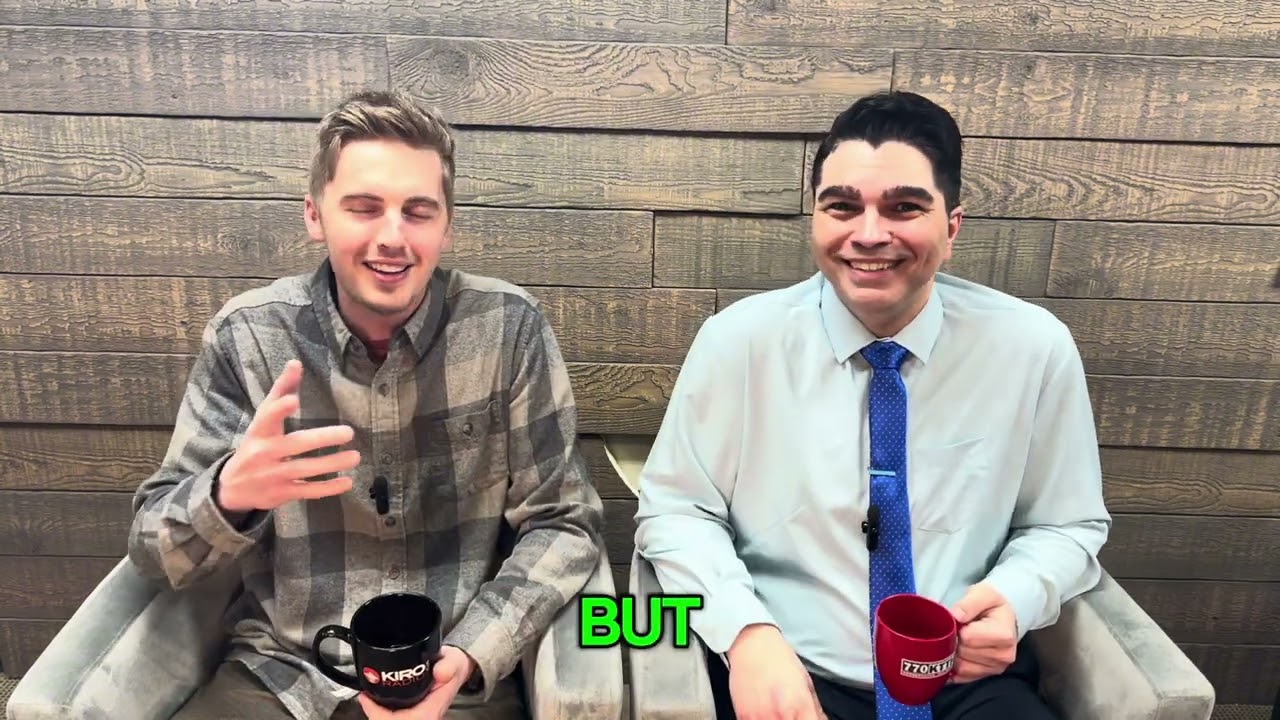Pandemic ‘exacerbated an already tenuous situation’ in child care
Jul 22, 2020, 3:22 PM
This time last year, before anyone had heard of coronavirus, there was a child care crisis across the United States. The pandemic has only made it worse.
Child care providers facing financial trouble due to COVID-19 pandemic
Child Care Resources, a 30-year-old nonprofit focused on early learners, provides support to families in identifying child care and early learning options. The nonprofit hosts the statewide Child Care Aware of Washington call center, which is a no-cost service for families or caregivers in search of child care.
“We don’t only identify what child care is available, but we talk about how to make decisions around child care,” Child Care Resources CEO Pheobe Anderson told KIRO Nights. “We do a significant amount of work supporting families who are struggling to pay for child care. We help them navigate our state’s sometimes complicated subsidy system, and we have a very specific program serving children and families experiencing homelessness.”
The other side of the organization is focused on supporting child care providers.
“We have 60 coaches and trainers who are in the field — or before COVID, were in the field — who are on site with child care and are helping them around quality improvement, really ensuring that children are experiencing the most high quality environments,” Anderson said.
Washington has a number of state requirements and quality of care initiatives focused on improving care, but it does take a lot of the provider to engage in the services, Anderson explained.
“We’ve seen increased education and training needs for providers, especially locally,” she said. “And now, across the state, we’ve seen the minimum wage increase. … King and Pierce County are incredibly high cost of living, as are some of the other urban areas in our state, so what we’re seeing is a high cost of living matched up against a underfunded and pretty overburdened early care system.”
Providers who make very little money are being asked to take on more costs and compete in a high market where many families are struggling to find care, Anderson said.
“There’s not enough supply to meet the demand, and for families that are low income, working with the state subsidy, there are less and less providers who are able to take that subsidy because it ultimately means that the provider is providing care and not being reimbursed at the market rate for it,” she said.
Pandemic brings existing issues to light
These existing issues in the child care system have been brought to the surface during the pandemic, and with it, the duality of people losing their jobs, making it more difficult to pay for child care. More kids are also at home since schools are closed, which, among other things, means a lot of kids are missing out on opportunities for food or access to mental health, social, and emotional supports.
“We have to think about the whole sort of social unit of school and what kids are missing,” Anderson said. “So when COVID hit, I mean, like all of us, we were so devastated by the significant impact. Schools began closing and child cares had a dramatic drop in enrollment as parents kept their kids at home.”
“And they also saw a dramatic increase in the cost to ensure that they were providing the correct PPE materials to keep kids that were on site safe, and the cost to sanitize,” she added.
While families in Washington were fighting to find toilet paper, Anderson recalled, child care providers who still had a number of kids and families to support couldn’t get supplies either.
“The whole system just came sort of to a crunch at a very significant moment,” she said. “What we saw was almost immediately 40% of child cares just closed, they shut their doors.”
Another factor in the closures was that a lot of providers are also parents and couldn’t juggle going to work and having to care for their own kids at home.
“It exacerbated an already tenuous situation,” Anderson said.
In the first few months of the pandemic, the call center blew up.
“Everybody was searching for some answer around where they could safely care for children. And the calls were not just high in volume, but they were high in intensity,” Anderson said. “And you could hear the trauma that families were experiencing as they overnight had to figure out how to support a house full of kids, and many of whom maybe were still working or trying to work, or didn’t have the the option not to show up at a job somewhere.”
The demand from families was hard to support as Child Care Resources also didn’t have a lot of answers.
Helping providers weather the storm
On the provider side, there was a similar level of panic.
“But it was around desperately wanting to be available for the kids that they have, for years, been putting their arms around, the children who have been coming to them every day, and not feeling like they have the ability to get the supplies they needed,” she said. “There was, … and there still is, a significant supply chain problem.”
Child Care Resources was trying to help providers navigate staying afloat and weather the COVID storm.
“As a society, we know that we need child care to make the economy run, and from our end, we were also trying to support providers to safely keep their doors open,” she said. “We saw providers who had traditionally only served children 0 to 5, all the sudden serving school age kids. And so our coaches were supporting them in how to adapt their care, how to really increase and expand their curriculum, to respond to an older age group.”
“Everything that we knew was sort of thrown up in the air, and everybody had to try to create a new existence,” she added.
Anderson recognized that there have been a number of helpful efforts, including foundations and individual donors stepping forward. She hopes the provider relief grants that have started during the pandemic continue, adding that they’ve been able to help providers reopen or stay open.
“They just help them cover those costs that I mentioned earlier, such as rent, or payroll, or the additional supplies that they need to keep kids safe,” Anderson said.
“As we weather the school year, where it’s very likely that most kids will be home or in child care, we’re going to need to sustain the existing supply of child care so that when people go back to work in much more significant waves, there will be a child care structure,” she added.
Supporting child care into the future
Before the pandemic, the child care crisis has been largely “undercover” unless you’re in the industry.
“Now that it’s surfaced and it’s emerged, it’s a great opportunity for both government and business to come together to think about sustainable solutions, and that is going to be around investment or funding of some sort,” Anderson said. “Businesses can’t run if their employees can’t come to work, and so they … have an investment in being part of the solution and figuring out how to really hold up child care.”
Another thing to think about is the state budget, Anderson said. Early learning gets 1.1% of the entire budget.
“Think about all the children you know, all the children that are 0 to 5, or 0 to 12, if you include school age — 1.1% of the budget is going to this entire child care structure that we’re all relying on to do our work,” she said. “… We do a lot of advocacy and we think about policy change. There needs to be some policy change and on a structural state level, and federal level, to really think about deeper investments.”
What struggles of child care centers could mean for Washington parents
For parents worried about the fall, Anderson says families should make the decision that is right for them.
“There will be child care,” she said. “We will not have enough supply of child care to support every school aged child, but we know that not every school aged child is going to need child care because lots of families will make decisions, if they can, to either keep kids home or find a relative, which is a significant part of the solution as well.”
Most child care providers, Anderson added, will do everything they need to in order to comply with public health guidelines and keep kids safe.
“I think working with your school district and making your voice known about what your needs will be will help the school district as they make their own decisions,” she added. “That’s something that I think is really, a really important thing to point out is, as schools are making very difficult decisions about what to do, child care and the school system … should be working together to come up with solutions for families and with families.”
If you’re looking for child care resources for your family, visit Child Care Resources website here or reach the call center at 1-800-446-1114.













